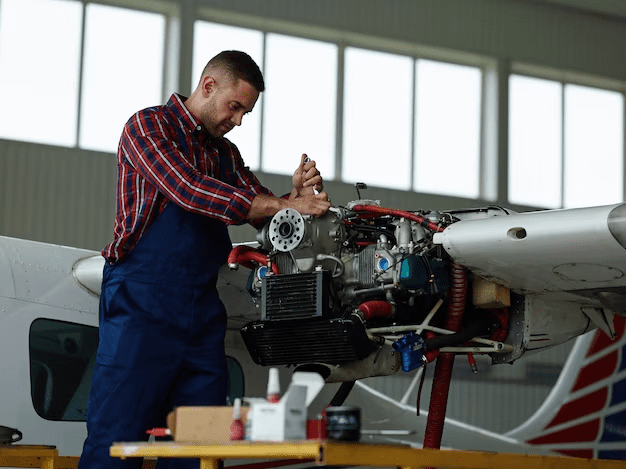Turbines are essential components in a variety of industries, from power generation to aviation and beyond. With time, deterioration can hurt turbine components, resulting in decreased efficiency and gratifaction. In the following paragraphs, we’ll explore essential strategies for turbine component repair, covering key factors, techniques, and finest practices to make sure optimal results.
Understanding Turbine Component Repair
Turbine component repair requires the restoration of numerous parts inside a turbine system for their original functionality and gratifaction. This might include components for instance blades, rotors, vanes, seals, bearings, and casings. Repairing these components is essential for maintaining turbine efficiency, reliability, and sturdiness, although minimizing downtime and pricey replacements.
Key Considerations for Turbine Component Repair
With regards to turbine component repair, several key factors must be taken into consideration to make sure effective restoration of functionality and gratifaction. Understanding these 4 elements is important for effective planning and execution of repair activities, ultimately resulting in improved efficiency and longevity of turbine systems. Before starting turbine component repair, it’s important to think about the following factors:
- Condition Assessment: Conduct an intensive inspection from the turbine components to evaluate their condition and identify any damage, put on, or defects. This helps determine the level of repair needed and inform the repair process.
- Material Compatibility: Be sure that the repair techniques and materials used are suitable for the types of materials and specifications from the turbine components. Using incompatible materials can result in further damage or degradation.
- Precision Machining: Precision machining is vital for turbine component repair to make certain proper fit, alignment, and functionality. Utilize advanced machining techniques and equipment to achieve tight tolerances and coatings.
- Quality Assurance: Implement rigorous quality assurance measures with the repair way to verify the integrity, reliability, and satisfaction in the repaired components. This may include non-destructive testing, dimensional inspections, and material analysis.
- Compliance with Standards: Stay with industry standards, rules, and manufacturer specifications when performing turbine component repair for that utmost safety, reliability, and compliance with regulatory needs.
Essential Tips for Turbine Component Repair
Navigating the reasons of turbine component repair needs a keen knowledge of essential techniques to attain optimal results. This are invaluable for turbine operators trying to enhance efficiency, reliability, and durability of the systems through effective repair practices.
- Thorough Inspection: Begin your turbine component inspections by performing an in-depth examination for signs of wear or degeneration – such as visual examination, dimensional measurements and nondestructive techniques such as ultrasound testing or dye penetrant inspection.
- Locate Root Causes of Damage or Decay: In order to address underlying problems and stop future incidents from reoccurring, it’s vitally important to identify root causes of any observed damage or degradation and address its main sources as soon as possible. This might involve analyzing operating conditions, ecological factors, material qualities, and maintenance practices.
- Select Repair Techniques: Choose appropriate repair techniques using the type and extent of injury for the turbine components. Common repair techniques include welding, brazing, machining, coating, grinding, and thermal spray deposition.
- Use High-Quality Materials: Select high-quality repair materials that are appropriate for materials and specifications in the turbine components. This ensures proper connecting, strength, corrosion resistance, and sturdiness in the repaired components.
- Follow Manufacturer Guidelines: Stay with manufacturer guidelines, recommendations, and specifications when performing turbine component repair. Including following approved repair procedures, using suggested techniques and materials, and looking after proper documentation.
- Ensure Proper Fit and Alignment: Focus on proper fit, alignment, and clearances during turbine component repair to make sure optimal performance and durability. This might involve precision machining, dimensional checks, and set up adjustments.
- Perform Testing and Validation: After finishing the repair process, perform thorough testing and validation to ensure the integrity, functionality, and gratifaction from the repaired turbine components. This might include functional testing, pressure testing, vibration analysis, and gratifaction evaluation.
- Monitor Performance: Monitor the performance from the repaired turbine components with time to make sure ongoing reliability and functionality. Implement preventive maintenance measures and regular inspections to identify any indications of degeneration or issues in early stages.
Conclusion
Turbine component repair can be a critical part of turbine maintenance and reliability, requiring meticulous planning, execution, and oversight to achieve optimal results. By utilizing essential strategies for example performing thorough inspections, identifying root causes, selecting appropriate repair techniques, using high-quality materials, and sticking with manufacturer guidelines, turbine operators can make certain the integrity, performance, and sturdiness from the turbine components. With proper concentrate on detail and adherence to guidelines, turbine component repair may help maximize efficiency, minimize downtime, and extend the presence of turbine systems.





